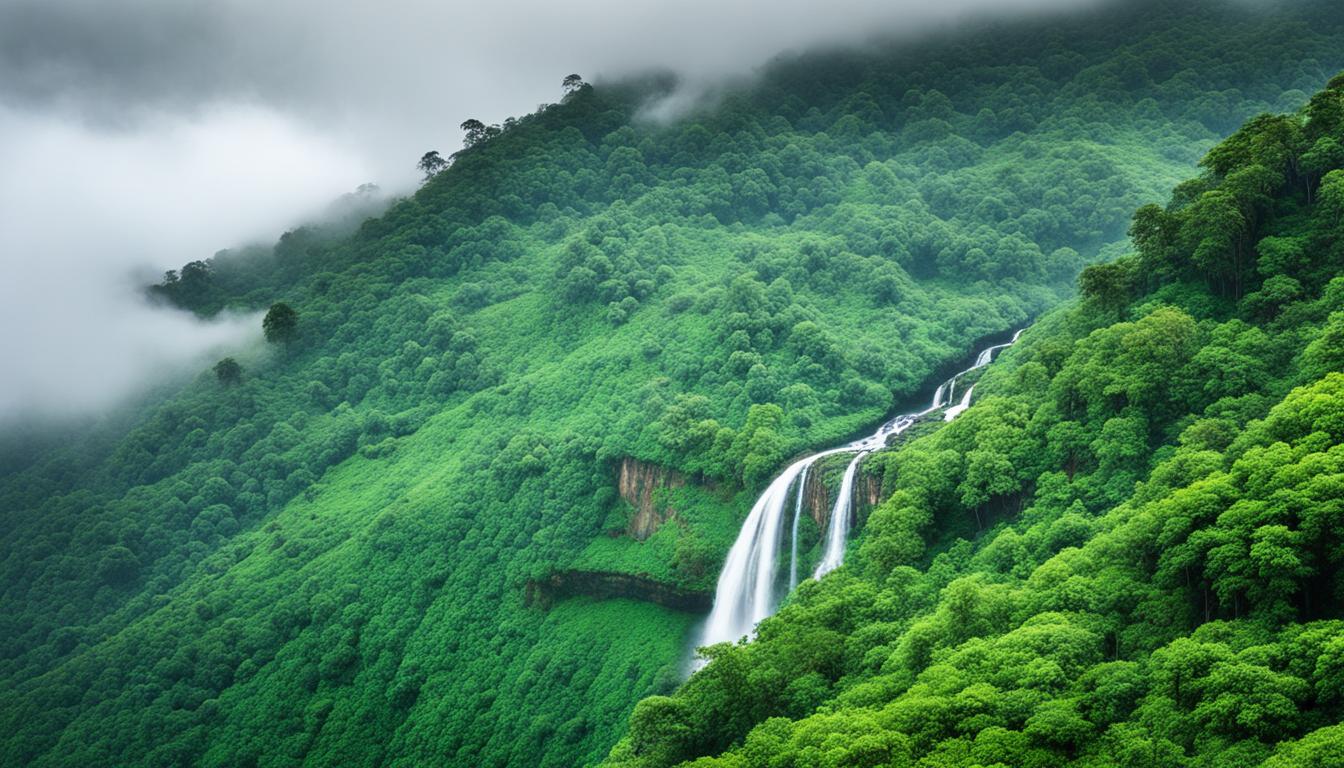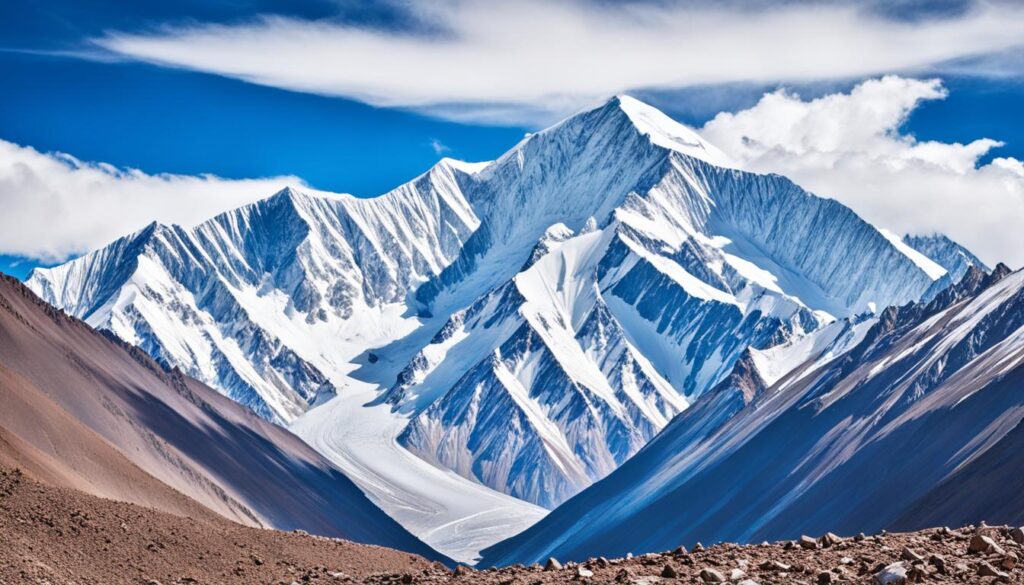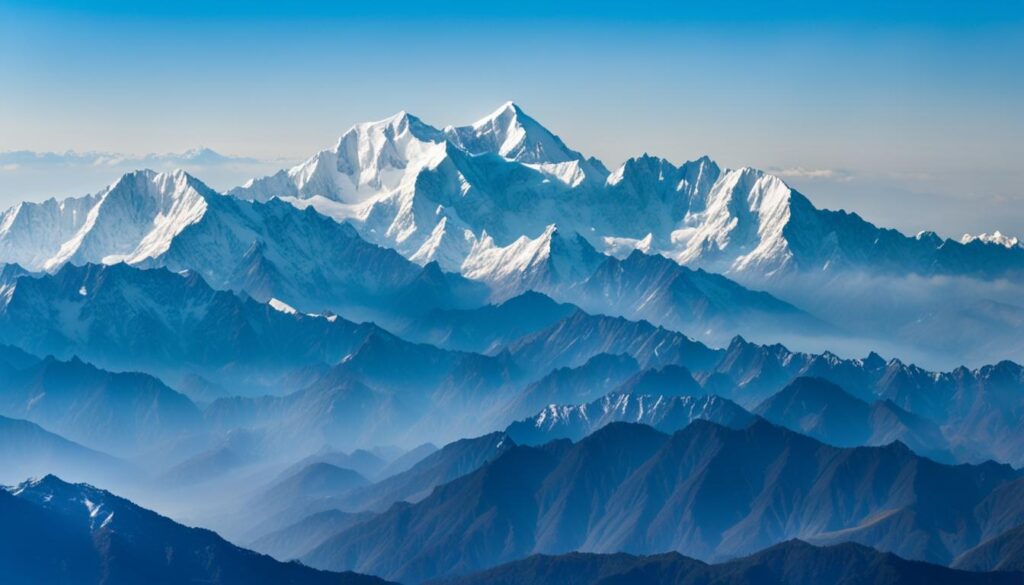
Forbidden Wonders: Beautiful Places in India Off-Limits
Did you know there are amazing places in India you can’t visit? These spots are off-limits but are full of natural beauty. They are like hidden treasures, secret and out of reach, waiting to be discovered.
Join us on a virtual trip to these prohibited tourist attractions in India. We’ll uncover the beauty and greatness of these hidden spots. These places reveal the secrets of India’s off-limits wonders to us.
Upper Part of Pangong Tso Lake, Ladakh
The upper part of Pangong Tso Lake is in Ladakh and is stunning. It is surrounded by rugged mountains. One can see a beautiful view that catches everyone’s attention. But, tourists cannot explore all of it due to a barrier.
A part of Pangong Tso is in a disputed area between India and China. This area is the Line of Actual Control (LAC). Because of this, tourists can’t go to the upper part of the lake.
The dispute makes this area off-limits for visitors. The Indian side of Pangong Tso is open, though. But the restricted areas remind us of the ongoing tensions and complexities.
“The upper part of Pangong Tso Lake is a hidden gem nestled amidst the majestic landscapes of Ladakh. Its serene beauty is enhanced by the mountainous backdrop, creating a breathtaking sight that is truly unforgettable.”
Tourists can still see the beauty of Pangong Tso’s open areas. The blue waters and snow-capped peaks are awe-inspiring. They showcase the natural beauty of Ladakh.
Admiring Pangong Tso Lake’s beauty from allowed areas is a humbling experience. The upper part may be off-limits. But the accessible areas show the enchanting wonders of Ladakh.
Stok Kangri, Ladakh
Stok Kangri is in the stunning Hemis National Park in Ladakh and is one of India’s highest trekking peaks. It is currently closed to help protect the environment. The All Ladakh Tour Operators Association did this to save Stok Kangri’s fragile ecosystem.
The aim is to let Stok Kangri’s natural beauty recover. It needs to heal from the damage caused by too many visitors. The decision to close it helps ensure it can remain beautiful for future generations.
Closing Stok Kangri is key to fighting the harm caused by too many tourists. This includes soil erosion, pollution, and damaging the habitats of many creatures. The closure helps keep a good balance between exploring nature and preserving it.
Stok Kangri embodies the magnificence of Ladakh’s diverse landscapes, from snow-capped peaks to serene valleys. Its closure serves as a reminder that responsible tourism practices are imperative to protect and nurture these natural wonders.
The closure of Stok Kangri may be sad for some adventurers. Yet, it’s a chance to think about how we affect nature. It’s a call to practice sustainable travel that protects Ladakh’s beauty.

Aksai Chin, Ladakh
Aksai Chin is in Ladakh. It’s a place with great natural beauty. It sits in the Himalayas, away from the busy world. The area has breathtaking views that very few travelers have seen.
But, Aksai Chin isn’t just beautiful. It’s also a spot where India and China don’t agree on the border. This conflict makes Aksai Chin hard for visitors to enter. India sees it as part of Ladakh in Jammu and Kashmir. China, however, claims it as its own. This disagreement has made the area one of the world’s most dangerous places.
Aksai Chin captivates those who love adventure and geopolitics. The landscape is dramatic, with wide-open spaces and sharp mountains. It’s hard to get to but stunning. Despite being hard to reach, its beauty and mystery attract bold explorers.
Reasons Aksai Chin is a Dangerous Place
| Danger Factors | Description |
|---|---|
| Geopolitical Tensions | The ongoing border dispute between India and China creates an unstable environment, with the potential for conflict. |
| Extreme Weather | Aksai Chin experiences harsh weather conditions, including freezing temperatures and blizzards, making it treacherous for travel. |
| Geographical Challenges | The rugged and inhospitable terrain of Aksai Chin poses significant challenges to navigation and survival. |
| Restricted Access | Due to the disputed status of the region, access to Aksai Chin is heavily restricted, limiting the presence of support systems and emergency services. |
Aksai Chin is both dangerous and beautiful, and it’s closed to travelers. But its natural beauty and political importance still draw interest. It’s a place full of wonder and secrets for those eager to learn more.
Mount Kanchenjunga, Sikkim
Mount Kanchenjunga is in Sikkim and is the third-highest peak in the world. It is sacred and off-limits for climbing from the Indian side. The local Buddhists deeply respect it as a holy place.
In 2001, a law was made to protect Mount Kanchenjunga. This law stops people from climbing it. It keeps the mountain safe as a place of worship.

The climbing ban has helped for over twenty years. It lets the mountain keep its beauty and importance. People can see it from afar and understand its value to the locals.
This may upset those who love adventure. Yet, the ban highlights the need to respect religious beliefs. It shows the importance of keeping our world pure.
Cholamu Lake, Sikkim
Cholamu Lake, also called Tso Lhamo Lake, is among the world’s highest lakes. It is in Sikkim, surrounded by great Himalayan peaks, lush greenery, and calm vibes. Its location near the Indo-China border makes access limited for visitors.
The lake is stunning, with clear turquoise waters and breathtaking scenery. Glaciers feed it, and it’s the start of the Teesta River. This river flows through Sikkim, adding beauty and helping the environment.
Getting to the lake is hard, which makes it even more special. Only a few, like the army and Sikkim officials, can sometimes go there. This is for military or official work.
Cholamu Lake is a true wonder in Sikkim. It’s pure and beautiful, with clear waters, snowy mountains, and green valleys all around. Seeing it is a real treat.
“Cholamu Lake is a hidden gem in Sikkim, showcasing the untouched natural beauty that the region has to offer.”
Key Highlights
- One of the highest lakes in the world
- Located in Sikkim, India
- Proximity to the Indo-China border
- Restricted access for tourists
- Source of the famous Teesta River
Barren Islands, Andaman and Nicobar Islands
The Andaman and Nicobar Islands are in the beautiful Bay of Bengal. They’re known for their breathtaking natural beauty. The Barren Islands are unique in this group because they have India’s only active volcano.
The Barren Islands show the raw power of nature with their rugged and volcanic landscapes. However, for safety, you can’t directly visit the island. But, there are other ways to see the volcano from afar.
By boat or ferry, visitors can see the Barren Islands. This trip is safe and lets you see the volcanic activity and the island’s special rocks. While sailing, enjoy the beautiful coastline and watch smoke rise from the volcano.
The water around the Barren Islands is very clean. It’s perfect for snorkeling and diving, with lots of fish, beautiful coral reefs, and Manta rays. Diving here shows the amazing marine life living near the volcano.
| Highlights of the Barren Islands | Visitor Safety Concerns |
|---|---|
|
|
Even though you can’t explore the Barren Islands up close, they are still an exciting place. This island showcases nature’s beauty and power. While following the rules, you can still enjoy great views and sea life, making this spot a unique treasure in India.
Conclusion
India combines beauty and mystery with places that visitors cannot see. These spots make the country’s travel scene very special. They spark our curiosity.
We may feel sad that we can’t visit these secret spots. Yet, we must respect why they are off-limits. Reasons like political issues, environmental care, or sacred value make them more intriguing.
Still, India has many wonderful places that are open to everyone. Think of old temples and green national parks. These spots let us enjoy India’s stunning beauty and rich culture.
FAQ
Are tourists allowed to visit the Upper Part of Pangong Tso Lake in Ladakh?
Tourists can’t visit the upper part of Pangong Tso Lake in Ladakh. It’s in a disputed area between India and China. Since the Line of Actual Control (LAC) runs through it, access is restricted.
Why has Stok Kangri in Ladakh been closed to tourists?
Stok Kangri is closed to tourists because of environmental damage from too many visitors. To protect its ecosystem, climbing and trekking have been banned. The aim is to let the area recover.
Why is Aksai Chin considered a forbidden place in Ladakh?
Aksai Chin is off-limits due to a dispute between India and China. Both countries claim it, and tourists can’t visit. It’s one of the world’s most dangerous places.
Why is it forbidden to climb Mount Kanchenjunga from the Indian side?
Climbing Mount Kanchenjunga from India is banned for religious reasons. Local Buddhists see the mountain as sacred. The government banned expeditions to preserve its sanctity.
Why is Cholamu Lake in Sikkim off-limits for tourists?
Cholamu Lake is too close to the Indo-China border, so tourists can’t go there. Only the army and Sikkim authorities can visit. Despite its beauty, the public can’t access it.
Can tourists directly access the Barren Islands in the Andaman and Nicobar Islands?
Tourists can’t go directly to the Barren Islands because of safety concerns around the active volcano. But they can still see it from afar by boat. This allows them to enjoy the island’s natural beauty and marine life.
What are some beautiful places in India that are off-limits?
Off-limits places include the upper Pangong Tso Lake, Stok Kangri, Aksai Chin, Mount Kanchenjunga, Cholamu Lake, and the Barren Islands. They’re restricted for reasons like disputes, environmental and religious concerns, and safety.
Source Links
- https://timesofindia.indiatimes.com/travel/destinations/forbidden-places-that-you-cannot-visit/photostory/83115787.cms
- https://www.holidify.com/pages/fobidden-places-in-the-world-1596.html
- https://www.indianholiday.com/blog/forbidden-places-in-india-that-tourists-are-not-allowed-to-visit/

Leave a Reply